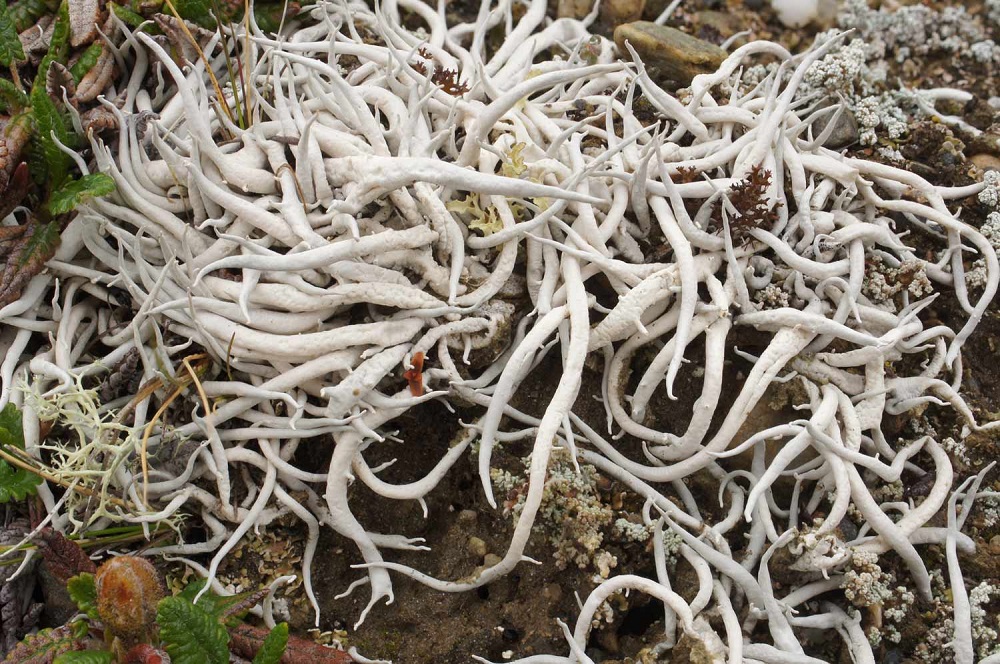Climate Change And The Rise Of Dangerous Fungi: A Growing Threat

Table of Contents
Warmer Temperatures and Increased Humidity: Ideal Conditions for Fungal Growth
Rising temperatures and increased humidity create a perfect breeding ground for fungal spores. These conditions are crucial for fungal germination, growth, and reproduction. The warmer, wetter conditions caused by climate change are significantly impacting fungal populations globally.
- Increased rainfall and flooding: Excess moisture provides the ideal environment for fungal spores to germinate and thrive, leading to increased outbreaks of fungal diseases in both plants and animals.
- Higher temperatures: Elevated temperatures accelerate fungal metabolic processes, resulting in faster growth rates and increased reproductive output. This means fungal populations can expand more rapidly in a warming world.
- Longer growing seasons: Extended periods of warmth and moisture extend the time frame for fungal proliferation, allowing for multiple cycles of growth and reproduction throughout the year.
- Specific examples: Candida auris, a multi-drug resistant fungus, is thriving in warmer climates, causing serious infections in hospitals worldwide. Similarly, various plant pathogens, like Phytophthora infestans (responsible for potato blight), are becoming increasingly problematic due to warmer, wetter conditions.
Expanding Geographic Ranges of Pathogenic Fungi
Climate change is not only intensifying fungal growth in existing habitats, but it's also allowing pathogenic fungi to expand their geographic ranges into previously unaffected regions. This expansion exposes new populations of humans, animals, and plants to potentially devastating fungal diseases.
- Altered wind patterns and air currents: Changes in atmospheric circulation patterns facilitate the long-distance dispersal of fungal spores, enabling them to colonize new territories.
- Migration of vectors: Insects and animals, acting as vectors, can carry fungal spores over vast distances, introducing them to new environments.
- Examples: The range of Coccidioides, a fungus causing valley fever, is expanding due to climate change, affecting areas previously considered low-risk. Similar expansions are observed in many plant pathogens, impacting agricultural yields globally.
- Impact: This expansion has significant consequences for human health, leading to increased incidences of fungal infections in previously unaffected populations. Agriculture is also severely impacted, with crop losses escalating due to the introduction of new fungal diseases.
Weakened Immune Systems and Increased Susceptibility
Climate change is creating a cascade of stressors that weaken human and animal immune systems, increasing vulnerability to fungal infections. These stressors exacerbate the impact of fungal diseases.
- Respiratory illnesses: Climate change contributes to increased incidence of respiratory illnesses, such as asthma and allergies, which compromise the immune system and make individuals more susceptible to opportunistic fungal infections.
- Malnutrition: Climate change impacts food security, leading to malnutrition which weakens immune function and increases susceptibility to fungal diseases.
- Heat stress: Extreme heat weakens the body's ability to fight infections, making individuals more vulnerable to fungal pathogens.
- Air pollution: Increased air pollution linked to climate change further compromises immune responses and increases susceptibility to fungal infections.
Impacts on Agriculture and Food Security
Climate change-driven fungal outbreaks are having a devastating impact on global agriculture and food security. The increased prevalence and severity of fungal diseases are significantly reducing crop yields and impacting livestock production.
- Increased prevalence of plant fungal diseases: This leads to substantial crop losses, impacting food availability and increasing food prices.
- Impact on livestock health and productivity: Fungal diseases in livestock reduce productivity and can lead to significant economic losses for farmers.
- Economic implications: The economic costs associated with fungal diseases on agricultural production are substantial, further exacerbating food insecurity.
- Climate-resilient agriculture: Developing climate-resilient agricultural practices is crucial to mitigating the impact of climate change on food production. This includes developing disease-resistant crops and employing improved farming techniques.
Mitigating the Threat: Strategies for Combating Climate Change-Driven Fungal Diseases
Addressing the threat of climate change-driven fungal diseases requires a multifaceted approach encompassing both mitigation and adaptation strategies.
- Climate change mitigation: Reducing greenhouse gas emissions is paramount to slowing the pace of climate change and minimizing the conditions that favor fungal growth.
- Climate-resilient agriculture: Investing in research and development of disease-resistant crop varieties and improved farming techniques is crucial for enhancing agricultural resilience.
- Surveillance and early warning systems: Developing robust surveillance systems and early warning systems for fungal outbreaks is vital for enabling timely interventions and preventing widespread damage.
- New antifungal drugs and treatments: Research and development of new antifungal drugs and treatments are crucial for combating drug-resistant fungal pathogens.
- Public health education and awareness: Raising public awareness about the link between climate change and fungal diseases is essential for promoting preventive measures and improving health outcomes.
Conclusion
The link between climate change and the rise of dangerous fungi is undeniable. The increased prevalence and virulence of fungal pathogens pose a significant threat to human health, agriculture, and global ecosystems. The consequences are far-reaching and demand immediate action. We must invest in research, develop effective mitigation strategies, and implement climate-friendly policies to combat this growing threat. Learn more about climate change and the rise of dangerous fungi and share this information to raise awareness and inspire action. Together, we can mitigate the impact of climate change and protect ourselves from this emerging threat.

Featured Posts
-
 54 Xronon Kai Apsegadiasti I Naomi Kampel Stis Maldives
May 26, 2025
54 Xronon Kai Apsegadiasti I Naomi Kampel Stis Maldives
May 26, 2025 -
 Eala Ready For Historic Grand Slam Debut In Paris
May 26, 2025
Eala Ready For Historic Grand Slam Debut In Paris
May 26, 2025 -
 Growth Of Alternative Delivery Services In Response To Canada Post Issues
May 26, 2025
Growth Of Alternative Delivery Services In Response To Canada Post Issues
May 26, 2025 -
 Boe Rate Cut Odds Diminish Pound Gains Momentum Following Uk Inflation Report
May 26, 2025
Boe Rate Cut Odds Diminish Pound Gains Momentum Following Uk Inflation Report
May 26, 2025 -
 Alleged Naomi Campbell Met Gala Ban Sparks Wintour Feud Rumors
May 26, 2025
Alleged Naomi Campbell Met Gala Ban Sparks Wintour Feud Rumors
May 26, 2025
